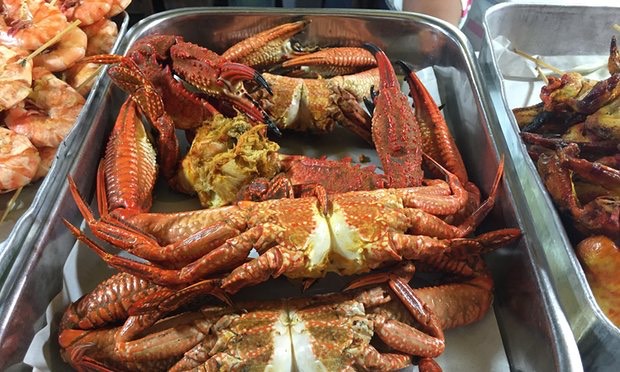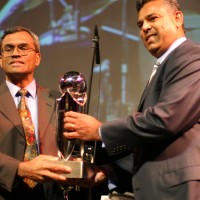by Isabel Choat
You can hear Sri Lanka’s favourite street snack being made before you see it. The loud, distinctive sound of metal blades bashing against a metal hotplate fills the smoky air along the seafront at Galle Face Green in Colombo, mingling with the crash of waves against the sea wall and the cries of cooks yelling orders at each other.
Like many great dishes, kottu is made from leftovers, using day-old rotis that are chopped into strips and mixed with spices, egg, chicken or beef, and garnished with chopped raw onion and chilli. And the place to eat it on the hoof in Colombo is Nana Kings; or Nana Rauf; or Nana Toina; or any of the Nanas on the large expanse of scrubby grass facing the Indian Ocean and overlooked by the iconic Galle Face Hotel.
The original Nana’s opened here in the early 1980s. It no longer exists but its legacy lives on – with every new stall to open along the same stretch taking the same name. We took a seat at Nana Kings, ordered a chicken kottu … and listened to the chef begin his rhythmic shredding.
Kottu isn’t pretty: it’s a big, messy pile of comfort food; a tasty, moreish carb-fest. Yet my guide, Thushni, insisted we try more local dishes, and soon our plastic table was full – with egg naan, and devilled cuttlefish and crab smothered in a deep red, tangy sauce. The table was a mess of crab claws, our tops were splattered in sauce. We moved on to the next stall for the barbecue course, another Nana speciality. Prawns on sticks arrived with an illicit can of beer wrapped in white paper – the Muslim-run stalls are unlicensed, but the waiters can spot a westerner with a thirst.
Between the Nanas are smaller stalls selling pineapple, mango and veralu, a sour, olive-like fruit often used in pickles, sprinkled in chilli and salt; and carts piled with salty, crunchy cassava fries or isso vadai, another popular hawker snack of prawns on a lentil pancake. At the end of the row there’s a wooden pier where a paan man sits on the steps with a tray of saravita – grated coconut, coloured and spiced and wrapped in betel leaves – and the sound of the sea drowns out the furious rat-a-tat-tat of metal on metal.
The Galle Face Green stalls are open until 11pm. Locals seeking their kottu fix after that head instead to the Galle Road, hometo another famous kottu purveyor: Pilawoos. Just like Nanas, the original Pilawoos has spawned a host of name-a-likes, all on the same stretch. But unlike Nanas, the original Pilawoos, which started in 1979, is still going strong. It is nothing much to look at inside – the hotplate theatrics take place out of view – and most locals don’t even bother to go in: Pilawoos is effectively a drive-through that you don’t actually drive through. Open 24/7, hungry locals rock up here at all hours (usually post-club or wedding party), park and wait for a waiter to take an order at the car window.

Here kottu is mixed with soft cheese, making it richer and heavier – the perfect booze soaker. The accompanying drink of choice is lime juice, which cuts through the richness, or chilled Milko (chocolate milk), which doesn’t. A waiter comes to our van to take our order, and soon we are eating another pile of shredded bread, loaded with cheese and fried chicken. After half a plate I’m defeated. I can’t eat another thing. Thushni has other ideas: “You have to have an ice-cream at Carnival – it’s been open for about 30 years and it’s an institution.”
http://www.theguardian.com











![TV-Poster-All-Exhibition-Sri-Lanka-in-Focus-USA-2025[1]](https://www.srilankafoundation.org/wp-content/uploads/2025/04/TV-Poster-All-Exhibition-Sri-Lanka-in-Focus-USA-20251-450x450.jpg)










